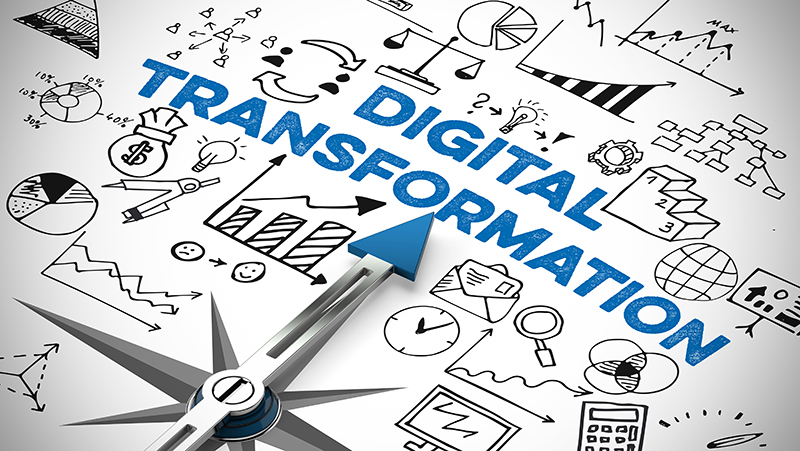How is AI being used in education?
AI has the potential to enhance the learning experience and save valuable time that can be put back into the hands of educators to use where it matters most…


Artificial intelligence (AI) is rapidly transforming the education sector, offering new possibilities for personalized learning and efficient classroom management, to name but one example.
Recently, Google CEO Sundar Pichai announced a $120 million fund dedicated to global AI education initiatives. This investment aims to bridge the AI divide and ensure that students around the world have access to high-quality AI-powered educational tools. Such significant investment underscores AI's role as a key driver of change in education, shaping how students learn and teachers teach.
Meanwhile, the World Economic Forum's latest report Shaping the Future of Learning: The Role of AI in Education 4.0 outlines how AI can support teachers by automating administrative tasks and providing real-time analytics on student performance and more. These capabilities enable educators to focus more on student engagement and personalized teaching strategies, addressing the global teacher shortage and improving educational outcomes.
As AI continues to revolutionize education, it's crucial to implement these technologies responsibly. Ensuring equitable access and safeguarding student data privacy are key concerns that need to be addressed to fully realize the potential of AI in creating inclusive and effective learning environments.
Personalizing learning with AI
AI is transforming education by enabling personalized learning experiences that adapt to each student's unique needs. One of the primary benefits of AI is its ability to provide tailored instruction through adaptive learning platforms. For instance, AI-powered systems can analyze students' performance in real-time and adjust the difficulty and type of content presented to them. This approach has proven particularly effective in bridging learning gaps, especially for students who may struggle with traditional teaching methods.
Danny Stefanic, CEO and Founder of the Hyperspace Metaverse Platform, highlights the transformative potential of AI in personalized education:, saying “AI is now enabling educators to create truly personalized lessons by leveraging students’ topics of interest and preferences.”
Such systems not only enhance academic performance but also foster a deeper understanding of subjects by allowing students to learn at their own pace.
Get the ITPro daily newsletter
Sign up today and you will receive a free copy of our Future Focus 2025 report - the leading guidance on AI, cybersecurity and other IT challenges as per 700+ senior executives
Moreover, experts emphasize that AI can be especially beneficial for neurodiverse students and those with diverse physical abilities. The ability of AI to provide a more inclusive and accommodating learning environment makes it a valuable tool in modern education. The World Economic Forum notes that AI can support personalized learning by customizing interfaces to better suit individual learning needs, ultimately creating a more equitable educational landscape.
Supporting teachers with AI
AI is also playing a significant role in supporting teachers by automating administrative tasks and providing tools that enhance their teaching practice. For example, AI can take over routine tasks such as grading, attendance tracking, and even drafting lesson plans. This allows teachers to focus more on direct interactions with students and developing innovative teaching strategies.
Daniel Schwartz, Dean of Stanford’s Graduate School of Education, cautions that while AI has the potential to transform teaching, it must be implemented thoughtfully.
“Technology is a game-changer for education – it offers the prospect of universal access to high-quality learning experiences, and it creates fundamentally new ways of teaching. But there are a lot of ways we teach that aren’t great, and a big fear with AI in particular is that we just get more efficient at teaching badly. This is a moment to pay attention, to do things differently,” he said.
Additionally, AI can provide real-time feedback and suggestions to teachers, helping them refine their craft. For example, AI tools can simulate student interactions, allowing teachers to practice and improve their response strategies. This capability is particularly valuable for new teachers or those looking to strengthen their classroom management skills.
Automating assessment and feedback
Automated assessment is another area where AI is making a significant impact. Traditional assessment methods can be time-consuming and often fail to capture the full range of student abilities. AI, however, offers a more nuanced approach to evaluating student performance. By analyzing patterns in student responses, AI systems can provide detailed insights into areas where students are excelling or struggling.
Bryan Brown, a professor of education at Stanford, points out that “what we know about learning is not reflected in how we teach.” AI has the potential to support powerful classroom discussions by helping teachers engage with each student individually, even in large classes. This is particularly important in subjects like language arts and social sciences, where open-ended responses and discussions are key components of the learning process.
AI-enabled assessments offer immediate, actionable feedback, allowing educators to implement targeted support faster than traditional methods. This helps in addressing student needs more effectively. These advancements in personalized learning, teacher support, and assessment are just the beginning. As AI evolves, it will continue to enhance education and tackle key challenges, expanding its impact on the learning experience.
Enhancing accessibility and inclusion
AI has tremendous potential to make education more accessible and inclusive for students with disabilities or those facing language barriers. AI-powered tools such as speech-to-text, text-to-speech, and real-time translation services can create a more equitable learning environment by catering to diverse learning needs. For instance, AI can assist visually impaired students by converting written content into audio, or help students with learning disabilities by breaking down complex concepts into simpler, more digestible formats.
Moreover, AI can support language learners by providing instant translations and language support, enabling students to access educational content in their preferred language. These tools help bridge gaps that may exist due to linguistic or cognitive challenges, ensuring that all students have the opportunity to succeed academically.
The COVID-19 pandemic highlighted the need for resilient education systems that can endure disruptions. AI has been essential in supporting remote learning and ensuring educational continuity through virtual classrooms, enabling educators to maintain student engagement even without in-person instruction.
AI also supports hybrid learning by blending in-person and online classes, offering flexibility and accommodating various learning preferences. Additionally, AI-driven analytics help educators identify struggling students and implement timely interventions, making education systems more responsive and adaptive.
Ethical and regulatory considerations
As AI becomes more integrated into education, addressing ethical and regulatory issues is crucial, particularly around data privacy. AI systems often require large amounts of personal data, raising concerns about how this information is managed. Ensuring compliance with data protection regulations is essential for maintaining trust.
Bias is another major concern. Poorly designed AI can perpetuate or worsen inequalities, offering unequal opportunities based on biased data. To prevent this, transparent and fair AI systems are needed, focusing on inclusivity and equity. Developing clear ethical guidelines is vital. Policymakers, educators, and developers must collaborate to create frameworks that ensure responsible AI use in education.
Looking ahead, the role of AI in education is poised to expand significantly. Emerging technologies such as AI mentors, advanced predictive analytics, and immersive learning environments are set to redefine the educational landscape. AI mentors could provide students with personalized guidance and support, akin to having a dedicated tutor available around the clock. Predictive analytics could help educators identify at-risk students early on and tailor interventions to prevent dropouts.
Moreover, the integration of AI with other technologies like virtual reality (VR) and augmented reality (AR) could lead to the creation of immersive learning experiences that go beyond traditional classroom settings. These technologies could simulate real-world environments, allowing students to explore and learn in ways that were previously unimaginable.
As these advancements unfold, it is crucial to keep the focus on the human element of education. “AI will never replace high-quality, human-led pedagogy,” says Tanya Milberg, manager of Education 4.0, World Economic Forum.
Instead, AI should be used to enhance human-led teaching by automating administrative tasks and allowing teachers more time for meaningful interactions with students. The future of education will likely involve a collaborative model where AI and educators work together to create richer, more personalized learning experiences for all students.
Rene Millman is a freelance writer and broadcaster who covers cybersecurity, AI, IoT, and the cloud. He also works as a contributing analyst at GigaOm and has previously worked as an analyst for Gartner covering the infrastructure market. He has made numerous television appearances to give his views and expertise on technology trends and companies that affect and shape our lives. You can follow Rene Millman on Twitter.
-
 Bigger salaries, more burnout: Is the CISO role in crisis?
Bigger salaries, more burnout: Is the CISO role in crisis?In-depth CISOs are more stressed than ever before – but why is this and what can be done?
By Kate O'Flaherty Published
-
 Cheap cyber crime kits can be bought on the dark web for less than $25
Cheap cyber crime kits can be bought on the dark web for less than $25News Research from NordVPN shows phishing kits are now widely available on the dark web and via messaging apps like Telegram, and are often selling for less than $25.
By Emma Woollacott Published
-
 Striding towards the intelligent world
Striding towards the intelligent worldSponsored Content As global industries rapidly shift gears from digitalization to digital-intelligent transformation, data storage emerges as the critical driver of this evolution
By ITPro Published
-
 How AI is powering the next wave of digital transformation
How AI is powering the next wave of digital transformationSupported Content The future is AI and it’s going to bring in a whole new era for businesses
By Mike Moore Published
-
 Driving efficiency in distribution and logistics through the power of AI
Driving efficiency in distribution and logistics through the power of AISupported Content AI is transforming industries around the world - and logistics is ripe for change.
By Mike Moore Published
-
 How AI is accelerating digital transformation in the banking industry
How AI is accelerating digital transformation in the banking industrySupported Content Gen AI, fraud detection, and chatbots are all transforming the financial industry, but the cloud is the foundation for it all
By Bobby Hellard Published